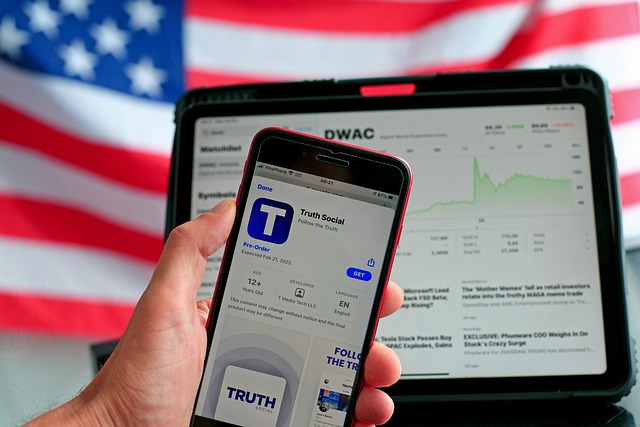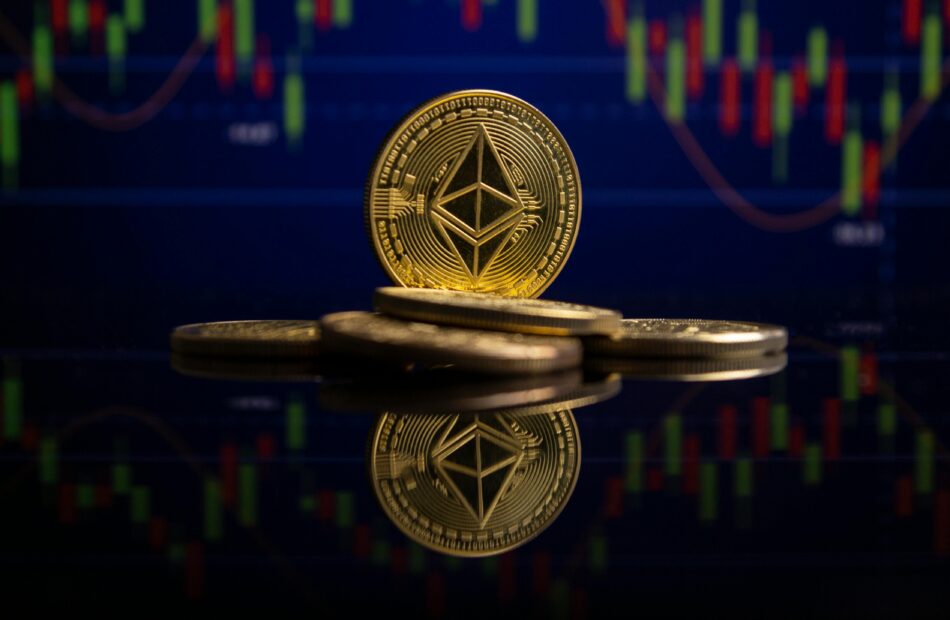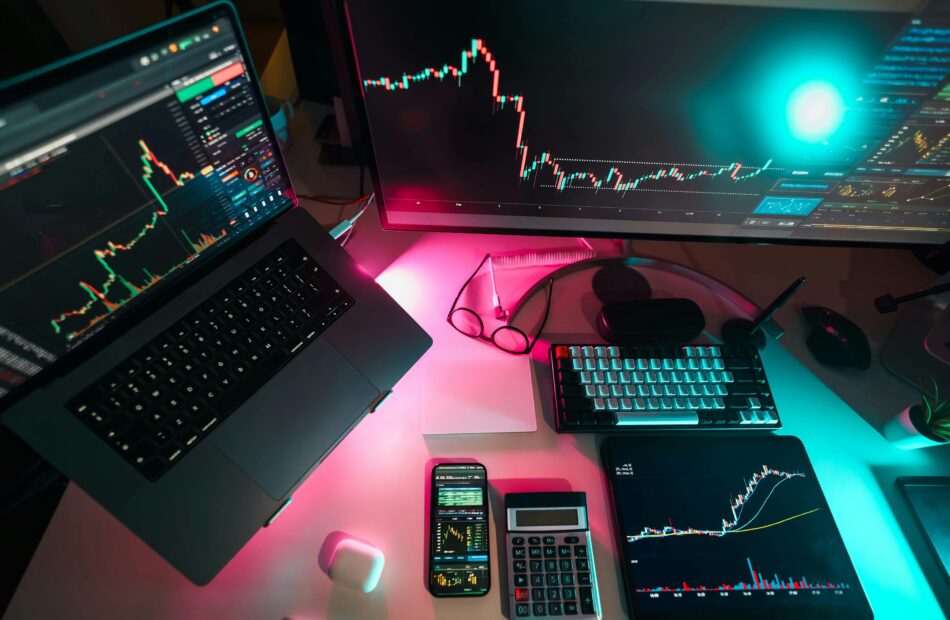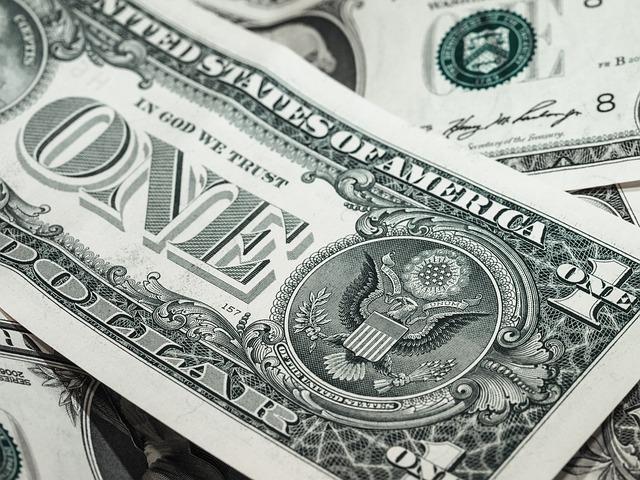Abracadabra.Money’s GMX pools hacked, $13M lost
About $13 million worth of cryptocurrency has been drained from decentralized lending protocol Abracadabra.Money following an exploit targeting pools using GMX tokens.In a March 25 X post, crypto cybersecurity firm PeckShield reported that contracts related to GMX and Abracadabra.Money had been compromised, resulting in the loss of about 6,260 Ether (ETH), worth around $13 million.The news follows Abracadabra.Money losing $6.49 million after its smart contracts were compromised in late January 2024. At the time, this also led to the protocol’s Magic Internet Money (MIM) stablecoin losing its peg to the US dollar.Related: Pump.fun’s new DEX reaches $1B volume a week after launchGMX denies contract vulnerabilityDespite initial reports, a pseudonymous GMX communications contributor claimed on X that “GMX contracts are not affected.” According to the user, GMX is involved because MIM’s pools are based on GMX v2 pools.GMX Market (GM) tokens are a core part of the GMX platform, earning fees from swaps and leveraged trading. MIM’s pools, known as cauldrons, are the protocol’s core product and provide isolated lending exposure.Related: DeFi lender Nostra pauses borrowing after price feed errorIn an official X post, GMX stated that the hack involved MIM’s pools that used GM tokens. The post further claimed that “no issues have been identified with GMX contracts,” adding:“We believe the issue relates solely to the Abracadabra/Spell cauldrons. These cauldrons allow for borrowing against specific GM liquidity tokens.”GMX and Abracadabra.Money had not responded to Cointelegraph’s inquiry by the time of publication.Hackers use Tornado Cash, bridge to EthereumGraphic tracking the hacked funds. Source: AMLBotCrypto forensics firm AMLBot provided Cointelegraph with a partial reconstruction of how the hack was performed. The hacker’s address was first funded through the Tornado Cash decentralized cryptocurrency mixer, and then those funds were used to pay the transaction fees of the malicious transactions. The stolen ETH was later moved from the Arbitrum network to Ethereum via a blockchain bridge:“The stolen funds, totaling 6,260 ETH, have been transferred from Arbitrum to Ethereum via a bridge.”AMLBot’s investigations department also confirmed to Cointelegraph that only Abracadabra.Money contracts were breached as part of the hack. The GMX smart contracts, on the other hand, were not exploited in the malicious transactions, AMLBot added.Magazine: What are native rollups? Full guide to Ethereum’s latest innovation
History suggests that digital gold can rush in an economic revolution
Opinion by: Michael Amar, co-founder of Chain of Events and general partner at v3ntureOnce upon a time, in 1848, a man could walk into the wilderness on the brink of poverty and emerge, caked in mud, dust and days-old sweat, a multimillionaire. The discovery of gold in California in the mid-19th century ignited a fuse, causing explosive ripples that transformed the American economy.In 2025, a relatively new resource, less shiny but no less brilliant and scarce, looks set to reshape the global economy and spark another race for accumulation. Only this time, there won’t be pickaxes and pans. There will be ASICs, algorithms and distributed ledger technology. Of course, this refers to Bitcoin (BTC), also known as digital gold.Just as the gold rush spurred on banking, financial systems, lending, trading and changes to monetary policy, history is repeating itself with Bitcoin, digital payments, asset tokenization and crypto-politicians. Laws, regulations and culture changed to accommodate gold. They’re now doing the same for Bitcoin and cryptocurrencies at large.Exploring the historical parallelsThe gold rush created wealth “out of thin air,” and Bitcoin is doing the same. With around $2 trillion in market value, those who adopted early and took the most risk are now millionaires (in fact, over 85,000 are confirmed) and, in some cases, billionaires (there are thought to be 17 of them). From the hundreds of thousands that descended on California, those who struck real gold used their newfound wealth to build railroads, telegraph lines and entire towns. Bitcoin’s early success stories used their financial muscle to stake further claims by developing applications, growing infrastructure businesses and nurturing the industry. Michael Saylor founded MicroStrategy, which had rebranded to Strategy. This business intelligence company holds over $48 billion worth of Bitcoin, while Changpeng Zhao founded the world’s biggest crypto exchange and is worth over $57 billion. Recent: Coinbase, Gemini CEO throws support behind Bitcoin-only US crypto reserveToday’s business analysts and market experts should look into the American gold rush, where they’ll find striking similarities. Just as gold mining once attracted workers and investors, Bitcoin attracts institutions, startups, talent, governments and capital inflows. Gold-backed reserves changed global economics and drove gold demand. Will a US strategic Bitcoin reserve do the same?Men started the gold rush with pickaxes and pans and ended it with hydraulic mining equipment. The earliest Bitcoin users mined with their home computers, whereas now there are enormous energy-efficient Bitcoin mining facilities, cutting-edge cooling apparatus and the Lightning Network. Scalability and efficiency have leaped forward.Broader implications for international financeBeyond instant wealth, infrastructure, monetary policy and economic ripples, there’s monetary sovereignty. Any country that establishes Bitcoin reserves as a hedge against inflation or geopolitical stability takes the future into its own hands. This is identical to gold, which has been used as a reserve for a long time. Since “The Nixon Shock” in 1971, however, the US dollar has decoupled from gold, creating an overdue opportunity for a new resource to fill its large gilded shoes.Monetary sovereignty is also a major driving force for retail adoption, with Bitcoin offering protection against inflation and government policy through economic decentralization.Addressing skepticism from different audiencesWidespread enthusiasm among tech leaders, libertarians, celebrities, businesses and popular political figures has met with years of fear, uncertainty and doubt (FUD) from regulators, skeptics and some of the world’s most prominent investment managers. They say that Bitcoin has no real value, but let it be said that gold is just a shiny, semi-scarce rock.Larry Fink, CEO of BlackRock — the world’s largest investment company with $10 trillion in assets under management — once called Bitcoin “an index of money laundering.” Over the years, he has gone from the messiah of the skeptics to purchasing 2.7% of the global Bitcoin supply and publicly stating his belief that it could reach $700,000 per BTC. “As I became a student of crypto, it was very clear to me that crypto is a currency of fear,” Fink said. “But that’s OK. If you’re frightened of the debasement of your currency or the economic or political stability of your country, you can have an international-based instrument called Bitcoin that can overcome those local fears.” If Fink can change his mind, so can other skeptics. In the run-up to his election win, Trump was quite vocal about a strategic Bitcoin reserve, and has continued to be. Things also seem to be taking shape in terms of individual states moving toward building their own reserves. Gold has had a transformative effect on the world. Bitcoin is now here to relieve it of its duties.Opinion by: Michael Amar, co-founder of Chain of Events and general partner at v3nture. This article is for general information purposes and is not intended to be and should not be taken as legal or investment advice. The views, thoughts, and opinions expressed here are the author’s alone and do not necessarily reflect or represent the views and opinions of Cointelegraph.
eToro trading platform publicly files for US IPO
Cryptocurrency-friendly trading platform eToro has filed for an initial public offering (IPO) in the United States following several previous attempts.The company said in a March 24 announcement that it had submitted a registration statement on Form F-1 with the US Securities and Exchange Commission related to the IPO of its Class A common shares.EToro has applied to list its Class A common shares on the Nasdaq Global Select Market under the ticker symbol “ETOR,” according to the announcement, which stated:“A registration statement on Form F-1 relating to these securities has been filed with the SEC but has not yet become effective.”eToro public IPO announcement. Source: eToroThe public filing comes over two months after eToro made confidential filings to the SEC in a move toward a potential IPO in New York, the Financial Times reported on Jan. 16.Submitted in January, eToro’s IPO filing may value the business at more than $5 billion and list the platform as soon as the second quarter of 2025, the report noted, citing unidentified sources familiar with the matter.Trading platforms such as eToro are often used by beginning investors looking to buy their first stock shares or cryptocurrency, thanks to their ease of use.EToro’s IPO received attention from some of the world’s most notable investment banks, including Goldman Sachs, Jefferies, UBS and Citigroup, as lead managing bookmakers.Related: Friday’s PCE inflation report may catalyze a Bitcoin April rallyEToro tried to go public in 2021 via SPAC offeringThe crypto-friendly trading platform had multiple previous attempts to go public on the US stock exchange.In 2021, eToro announced plans to go public via a merger with Fintech Acquisition Corp V, a special purpose acquisition company, valuing the company at $10.4 billion. However, the deal was terminated in mid-2022 due to unfavorable market conditions.Related: Friday’s US inflation report may catalyze a Bitcoin April rallyAlthough the United Kingdom remains its largest market, eToro is pursuing a US listing to tap into a broader investor base.“Very few of our global clients would trade UK shares,” eToro founder and CEO Yoni Assia reportedly said last year. He added:“Something in the US market creates a pool of both deep liquidity and deep awareness for those assets that are trading in the US.”In 2023, eToro raised $250 million in a funding round that valued the brokerage at $3.5 billion. The business may now be valued at more than $5 billion in its upcoming IPO, said one of the people familiar with the flotation plans.According to Forbes, eToro was one of the first regulated trading platforms in Europe to offer Bitcoin (BTC) services in 2013, just a few years after the first BTC transaction was made in January 2009.Magazine: Trump’s Bitcoin policy lashed in China, deepfake scammers busted: Asia Express
BugsCoin (BGSC) booms: 50% burn & trading surge signal global Web3 ascent
Bugs Coin (BGSC), created by the renowned Korean trading YouTuber Inbum with 630,000 subscribers, is quickly making its mark in the global cryptocurrency market. Originally launched as an innovative Web3-based cryptocurrency project, BGSC aims to transcend the traditional limitations of meme coins by integrating cultural and artistic elements to build a strong, community-driven ecosystem.Currently, BGSC is listed on major global exchanges. Built on the BNB Smart Chain (BSC), BGSC provides users with fast transaction speeds and low fees, enhancing overall user experience.Gate Ventures invests $8.5M in Bugs Coin ecosystemGate Ventures, recently announced via its official channels that it has made a strategic investment of $8.5 million in the Bugs Coin ecosystem.This investment will be used to accelerate the development of the AntTalk trading platform and the BGSC token. Gate Ventures stated, “Our strategic collaboration with BGSC aims to promote cryptocurrency education and trading while increasing global market participation.”Explosive trading volume growth: BGSC futures skyrocket 1,300% in 24 hoursRecently, BGSC has witnessed a massive surge in futures trading volume, drawing significant attention from global traders.According to CoinMarketCap, BGSC’s futures trading volume on Bitget skyrocketed by 1,300% within 24 hours, surpassing $30 million. This remarkable growth in trading volume outpaced several major cryptocurrencies and highlighting BGSC’s rapid expansion in the market.Additionally, CoinGlass data indicates that as of 20:00 PM (UTC) on the 17th, BGSC’s 24-hour liquidation volume reached $1.2 million, reflecting increased volatility alongside the rising trading volume.Massive token burn: BGSC supply slashed by 50%Bugs Coin recently completed a token burn of 50 billion BGSC, equivalent to approximately $3.25 billion. The burn was executed at 5:20 AM (UTC) on the 19th, effectively reducing the total BGSC supply from 100 billion to 49.845 billion tokens.The Bugs Coin team stated, “This strategic burn aims to decrease excess supply, increase BGSC’s scarcity, and enhance its long-term value while alleviating investor concerns regarding rug pulls and scams.” Furthermore, the team announced plans to allocate reserve and marketing funds via smart contracts to further reinforce decentralization.AntTalk Platform Drives Community Growth and Introduces a BGSC Mining Model.Bugs Coin is actively expanding community engagement through its AntTalk platform, a cryptocurrency information and simulated trading platform. Users can earn Bugs Points by participating in various activities on AntTalk, which can be converted into BGSC tokens.Key features of AntTalk:BGSC Mining via Simulated Trading – Users can earn BGSC through AntTalk’s simulated trading system without requiring complex mining equipment.Weekly Swap Feature – Bugs Points can be exchanged for BGSC on a weekly basis.Community-Driven Rewards – Airdrops, events, and community participation incentives reward active users.Fair Reward Distribution – AntTalk regularly allocates points based on trading performance to ensure fair rewards.Global Expansion – Designed to help beginners gain crypto investment experience, expanding its user base worldwide.BugsFunded Prop Trading System set for introductionTo further expand its ecosystem, Bugs Coin is set to introduce the BugsFunded Prop Trading System.BugsFunded is a decentralized crowdfunding and prop trading system that offers community-driven investment opportunities, allowing professional traders and retail investors to participate in a transparent and fair trading model.Key features of the BugsFunded Prop Trading System:Prop Trading Integration – The system utilizes a robust global trading infrastructure to deliver a secure and efficient trading environment.Community-Driven Investment Model – Users can fund traders via prop funding and share profits based on their performance.Decentralized Operations – Funds are managed transparently through smart contracts, eliminating intermediaries.Professional Trader Verification – Traders must undergo a performance-based evaluation before participating in prop trading.Transparent Profit Distribution – Investment returns are automatically recorded on the blockchain and distributed fairly through smart contracts.The BugsFunded Prop Trading System is expected to enhance BGSC’s liquidity and create a fair and collaborative investment environment for both professional traders and everyday investors.Future outlook for Bugs CoinBugs Coin is evolving beyond just a meme coin, establishing itself as an innovative cryptocurrency project with a robust ecosystem and real-world utility.Listed on several major global exchanges24-hour futures trading volume surged by 1,300%50 billion BGSC burned – Total supply reduced by 50%AntTalk platform driving simulated trading and BGSC miningBugsFunded Prop Trading System set for introductionCommunity-driven growth and increased decentralizationAs of March 24, BugsCoin has surpassed $0.0105Bugs Coin is committed to continuous ecosystem expansion and innovation, aiming to provide long-term value in the global cryptocurrency market.
Arizona’s strategic crypto reserve bills heads for full floor vote
Two strategic digital asset reserve bills in Arizona have cleared Arizona’s House Rules Committee on March 24 and are now headed to the House floor for a full vote.The bills together, if passed into law, would clear the way for Arizona to establish strategic digital assets reserves composed of existing assets confiscated through criminal proceedings in addition to newly invested public funds.The Republicans hold a 33-27 majority in Arizona’s House of Representatives, giving both bills a decent chance of passing. Source: Bitcoin LawsHowever, according to Bitcoin Laws, the final hurdle could be the state’s Democratic governor, Katie Hobbs. Hobbs has a history of vetoing bills before the House, having blocked 22% of bills in 2024 — the highest rate of any state governor.Arizona’s two crypto bills explainedThe two bills recently approved by Arizona’s House Rules Committee are the Strategic Digital Assets Reserve Bill (SB 1373) and the Arizona Strategic Bitcoin Reserve Act (SB 1025). The Strategic Digital Assets Reserve Bill (SB 1373) focuses on establishing a strategic digital assets reserve made up of digital assets seized through criminal proceedings to be managed by the state’s treasurer. The treasurer would be limited to investing no more than 10% of the fund’s total value each fiscal year. However, they would also be able to loan the fund’s assets in order to increase returns, provided that doing so doesn’t increase financial risks.The Arizona Strategic Bitcoin Reserve Act (SB 1025) specifically deals with Bitcoin (BTC). The bill proposes allowing Arizona’s Treasury and state retirement system to invest up to 10% of its available funds into Bitcoin. Additionally, SB 1025 would also allow for the state’s Bitcoin reserve to be stored in a secure, segregated account inside a federal Bitcoin reserve, should one be established.Related: US states lead in strategic Bitcoin reserve creation — Will Trump deliver on his BTC promise?While Arizona is now considered to be leading the race to establish a state-based digital asset reserve, several other states are hot on its heels.On March 6, the Texas senate passed the state’s Strategic Bitcoin Reserve Bill (SB-21) by a vote of 25-5. The Texan bill still needs to pass the House and get the governor’s signature to pass into law. Following this vote, a new bill was introduced by Democrat Representative Ron Reynolds to cap the size of the previously uncapped reserve to $250 million.Utah also recently passed Bitcoin legislation, but all references to the establishment of a strategic reserve were removed at the last moment.Meanwhile, the Oklahoma House passed its Bitcoin Reserve Bill HB1203, 77-15 on March 25 — that bill will now head to the state’s senate.Magazine: SEC’s U-turn on crypto leaves key questions unanswered
3 reasons why Solana (SOL) price rallied above $140
Solana’s native token, SOL (SOL), gained 8.5% on March 24, reclaiming the $142 mark for the first time in two weeks. This rally mirrored the gains seen across the broader cryptocurrency market as traders began to expect reduced risks of an economic downturn. The growing risk appetite can also be seen among memecoins, several of which rallied by 12% or more since March 23.Outside of the broad market rally, SOL has its own merits, including a rise in network activity and the direct involvement of US President Donald Trump with the memecoin market. Additionally, growing interest from top traders on exchanges and the increasing likelihood of a spot Solana exchange-traded fund (ETF) approval suggest further potential for SOL’s price growth.SOL/USD (green) vs. crypto market cap (orange). Source: TradingView / CointelegraphDespite the recent rally, SOL has underperformed the broader crypto market by 23.7% over the past two months. This weakness is linked to a 93% decline in Solana network fees during that period. The decline likely began with traders’ disappointment in the memecoin sector but gradually affected the entire decentralized application (DApps) market.SOL still trades 52% below its all-time highTraders now question whether the selling was an overreaction, as SOL is currently trading 52% below its all-time high of $295. This comes despite Solana remaining the second-largest blockchain in terms of total value locked (TVL) and ranking third in onchain volumes. For comparison, BNB is trading 20% below its all-time high, and XRP is 28% below its peak.Blockchains ranked by total value locked (TVL), USD. Source: DefiLlamaWhile Tron and BNB Chain provide competition in terms of onchain volumes, deposits in Solana network’s smart contracts are valued at $6.8 billion. In third place, BNB Chain holds 21% less TVL, with $5.4 billion. Key highlights on Solana include the Jito liquid staking solution, Kamino lending and liquidity platform, and the Jupiter decentralized exchange.The fees on the Solana network are now higher than those on the Ethereum base layer, surpassing $1 million per day. More importantly, Solana’s revenue has recently reached its highest levels in two weeks. While still far from the levels seen two months ago, the increase in Solana network activity suggests that the bottom may have been reached as the numbers continue to improve steadily.Solana network daily fees, USD. Source: DefilLlamaAs a comparison, Ethereum accrued less than $350,000 in fees on March 23, leading to an increase in ETH supply as the built-in burn mechanism failed to offset weak blockchain activity. Solana, on the other hand, offers a 7.7% native staking reward rate, surpassing the equivalent 5.1% inflation rate, according to StakingRewards data.Solana ETF decision nears while Trump tweet boosts memecoin momentumDespite SOL’s price weakness, top traders on Binance have increased their leveraged long (bull) positions on SOL, according to CoinGlass data.Binance top traders’ long-to-short SOL ratio. Source: CoinGlassThe long-to-short ratio among top traders on Binance surged to 2.40 on March 23, its highest level in over two months. Part of the excitement can be attributed to the anticipation of the spot Solana exchange-traded fund (ETF) approval in the US.The US Securities and Exchange Commission is expected to issue its final verdict before the end of the year, according to Matthew Sigel, VanEck’s head of digital asset research. Although success is not guaranteed, the eventual spot Solana ETF approval would set SOL apart from its competitors, adding legitimacy to the asset, especially among institutional investors.Another source of momentum came from a weekend social post by President Trump, which explicitly mentioned the TRUMP memecoin and helped to create a buzz in the sector. In the Solana ecosystem, Fartcoin gained 15% on March 24, Dogwifhat (WIF) rallied 12%, and Pudgy Penguins (PENGU) traded up by 12%.Ultimately, SOL has significant potential for higher gains, given the network’s TVL and fees, especially in comparison to competitors, along with bullish positioning from whales using leverage.This article is for general information purposes and is not intended to be and should not be taken as legal or investment advice. The views, thoughts, and opinions expressed here are the author’s alone and do not necessarily reflect or represent the views and opinions of Cointelegraph.
What to expect at Paul Atkins’ SEC confirmation hearing
Former US Securities and Exchange Commission (SEC) member Paul Atkins is scheduled to appear before lawmakers in the Senate Banking Committee on March 27 as part of the Trump administration’s efforts to get the President’s picks into high-level government positions.Since Donald Trump took office on Jan. 20, the SEC, under the leadership of acting chair Mark Uyeda, has dropped several investigations and enforcement actions against major crypto firms, many of which had been in court for months or years. Many analysts see the SEC’s recent actions as the administration acting on its campaign promises to the crypto industry, some of whom donated directly to the then-presidential candidate or his inauguration fund after the Nov. 5 election.The commission’s actions — which include claiming memecoins aren’t securities — also stand in stark contrast to its position under former chair Gary Gensler, leading many to speculate that the SEC under Trump will lead to a booming US crypto industry essentially free of regulatory scrutiny. Atkins, whom Trump picked in December 2024 and officially nominated after taking office, received support from industry players at Coinbase and Ripple, both of which had ongoing enforcement actions brought by the SEC. The cases have since been dropped.Given the SEC’s seeming about-face on crypto enforcement and Trump’s potential conflicts of interest with the industry — with ties to the crypto firm World Liberty Financial and the launch of his own memecoin — some lawmakers are likely to question Atkins’ views on digital assets at the confirmation hearing. If confirmed by the Senate, Atkins could return to a soon-to-be entirely Republican-controlled SEC, with Democratic Commissioner Caroline Crenshaw expected to leave by 2026.It’s unclear if Atkins will have the votes to pass a confirmation hearing in the banking committee or a full floor vote in the Senate. Republicans hold a 53-seat majority in the chamber with only 51 votes required to confirm a nominee, and — with the exception of former Representative Matt Gaetz for US Attorney General — have not suggested that they intend to oppose any of Trump’s picks for crucial government positions for any reason.Democratic opposition to Atkins’ nominationMassachusetts Senator Elizabeth Warren, the top Democrat on the banking committee who has often equated crypto with drug trafficking and illicit actions, said in a March 23 letter to Atkins that she had concerns about his potential role at the SEC after his consulting firm, Patomak Global Partners, was an adviser to defunct crypto exchange FTX. He was also an adviser to the advocacy group Chamber of Digital Commerce. “Your deep involvement with FTX and other high-paying crypto clients raises questions about your approach to crypto regulation — and concerns about the extent of your knowledge of FTX’s illegal activities,” said Sen. Warren, adding: “Your financial ties to the industries you will soon regulate raise serious concerns about your ability to avoid conflicts of interest as a regulator.”Sen. Warren suggested that some members of the Senate would likely question Trump’s pick on the SEC recently dropping enforcement cases against crypto firms, reports that the US President’s family had held talks with Binance about a stake in the company as well as a pardon for former CEO Changpeng Zhao, how he intends to apply securities laws to digital assets if confirmed, and the commission’s recent opinion that memecoins were not securities. She hinted that Atkins may have also communicated with Republican SEC Commissioners Uyeda and Hester Peirce after his nomination.Related: SEC is waiting for a chair before setting crypto agenda — Hester PeirceAhead of his hearing, Atkins has already met with Republican lawmakers on the committee, including Wyoming Senator Cynthia Lummis. Cointelegraph contacted Sen. Lummis’ office for comment on the SEC commissioner’s nomination but did not receive a response at the time of publication.If his nomination moves through the Banking Committee and the Senate, Atkins would likely be confirmed to a term ending in June 2031, taking over as chair from Uyeda. In addition to the commission dropping investigations and enforcement actions, the SEC acting chair has proposed abandoning rules requiring crypto firms to register with the agency.Magazine: Ripple says SEC lawsuit ‘over,’ Trump at DAS, and more: Hodler’s Digest, March 16 – 22
Tabit offers USD insurance policies backed by Bitcoin regulatory capital
Barbados-based insurer Tabit has raised $40 million in Bitcoin for its insurance facility, in a move the company said would bolster its balance sheet and allow the insurance sector to capitalize on digital assets. Tabit’s Bitcoin (BTC) regulatory capital will be used to back traditional insurance policies, which are all denominated in US dollars, the company disclosed in a March 24 announcement. Tabit claims to be the first property and casualty insurer to hold its entire regulatory reserve in BTC. The company was founded by former executives of Bittrex, a Liechtenstein-based cryptocurrency exchange that was shuttered in 2023.“This solution offers a regulated dollar return, which we’re excited to earn on an alternative asset class such as Bitcoin,” said William Shihara, Tabit’s co-founder. Tabit co-founder and CEO Stephen Stonberg said Bitcoin allows the insurance sector to “Access a largely new and untapped source of insurance capital: digital assets.” “Bitcoin means Tabit has access to a whole new pool of capital,” a company spokesperson told Cointelegraph. “BTC has limited regulated use cases where a hodler can earn a return, but insurance is one of them.”Tabit launched in January as a Bitcoin-backed insurer, receiving a Class 2 license from Barbados’ Financial Services Commission. VC Roundup: Bitcoin RWA, BNB incubator, Web3 gaming secure fundingBlockchain and the insurance sectorSo far, most of the discussion around cryptocurrency and insurance has been tied to helping users recover financial losses and using blockchain technology to improve the industry’s transparency. According to a 2023 report by Boston Consulting Group, the blockchain-insurance nexus could become a $37 billion opportunity by 2030.Behind the scenes, there’s also a growing industry for matching insurance brokers and underwriters with digital asset capital providers. One such company is Nayms, an onchain insurance marketplace that facilitates the connection between capital providers and brokers via segregated accounts.Ensuro is another such provider, which curates insurance market opportunities and provides underwriting capacity through the use of stablecoins. According to its website, Ensuro has over 12,000 active policies, with APYs up to 22%. Magazine: Best and worst countries for crypto taxes — Plus crypto tax tips
DWF Labs launches $250M fund for mainstream crypto adoption
Dubai-based crypto market maker and investor DWF Labs has launched a $250 million Liquid Fund aimed at accelerating the growth of mid- and large-cap blockchain projects and driving real-world adoption of Web3 technologies.DWF Labs is set to sign two significant investment deals worth $25 million and $10 million as part of the fund.The initiative aims to grow the crypto landscape by offering strategic investments ranging from $10 million to $50 million for projects that have the potential to drive real-world adoption, according to a March 24 announcement shared with Cointelegraph.Source: DWF LabsThe fund will focus on blockchain projects with significant “usability and discoverability,” according to Andrei Grachev, managing partner of DWF Labs.“We’re focusing our support on mid to large-cap projects — the tokens and platforms that typically serve as entry points for retail users,” Grachev told Cointelegraph, adding:“However, good technology and utility alone isn’t sufficient. Users first need to discover these projects, comprehend their value and develop trust.”“We believe that strategic capital, coupled with hands-on ecosystem development, is the key to unlocking the next wave of growth for the industry,” he said.Similar incentives may bring more capital for developing blockchain projects and lead to more sophisticated blockchain use cases. The fund comes over a month after the 0G Foundation launched a $88 million ecosystem fund to accelerate projects creating AI-powered decentralized finance (DeFi) applications and autonomous agents, also known as DeFAI agents.Related: Crypto debanking is not over until Jan 2026: Caitlin LongNew blockchain users need reliable infrastructure: DWF LabsNew users need robust, functional infrastructure when interacting with their first blockchain-based application.“This approach ensures that when new users enter the space, they’re met with reliable infrastructure, strong communities, and meaningful use cases—not friction,” Grachev said, adding:“It’s about creating the conditions for real, sustained adoption and helping the next wave of users not just arrive onchain — but stay.”To ensure projects launch with solid infrastructure, each investment will offer ecosystem growth strategies, including developing lending markets, amplifying brand presence, and supporting the project’s stablecoin growth and DeFi activities to “deepen liquidity.”Related: ETH may reclaim $2.2K ‘macro range’ amid growing whale accumulationOther industry leaders have also blamed the friction in blockchain applications for the lack of mainstream adopters.The current user onboarding process is complicated and riddled with friction points, which is the main issue for mass crypto adoption, according to Chintan Turakhia, senior director of engineering at Coinbase.Speaking exclusively to Cointelegraph at EthCC, Turakhia said:“If our goal is to bring in the next billion users — and let’s start with just 100 million — we have to take all those friction points out.”Some of the most pressing friction points include setting up a wallet with a complicated seed phase, paying transaction fees and buying blockchain-native tokens to transact on a network.Magazine: Ripple says SEC lawsuit ‘over,’ Trump at DAS, and more: Hodler’s Digest, March 16 – 22
Cathie Wood to kick off El Salvador's AI public education program
Cathie Wood, founder of the investment firm Ark Invest, is set to kick off El Salvador’s new Urban Centers for Welfare and Opportunities (CUBO) AI program. This public education initiative, spearheaded by the government of El Salvador, aims to bring university-level AI courses to students and professionals. The program follows the country’s successful CUBO Bitcoin (BTC) and Lightning Network developer program.
According to El Salvador’s Bitcoin Office, the CUBO AI program will leverage industry experts to provide AI education to the public. In a recent post, the office stated, “As El Salvador continues to transform into a tech and financial powerhouse, CUBO AI will equip students and professionals with the necessary tools to dominate the AI frontier.”
El Salvador has been making strides to position itself as a regional hub for innovation and investment. This includes integrating Bitcoin classes into public education, utilizing geothermal energy to mine BTC, and passing pro-crypto and AI policies. In May 2024, Cathie Wood met with El Salvador’s President Nayib Bukele to discuss the future of digital assets and AI policy in the country. Wood left the meeting confident that El Salvador could increase its GDP tenfold over the next five years if it continues its tech-focused agenda.
In September 2024, Bukele also met with Elon Musk to discuss artificial intelligence and other 21st-century technologies, including crypto. Musk praised Bukele as “an amazing leader,” and the two continue to build rapport that could potentially lead to collaboration between the businessman and the government of El Salvador.
El Salvador’s efforts to become a regional tech hub have not gone unnoticed, as it continues to attract crypto businesses and foreign direct investment. With initiatives like the CUBO AI program, the country is positioning itself as a leader in the tech and digital finance space. As Cathie Wood stated in a recent post, “The President could scale El Salvador’s GDP 10-fold during his next 5-year term.” This forward-thinking approach is sure to bring even more success to the Central American country in the years to come.










